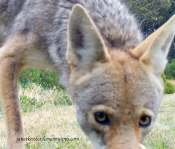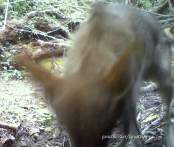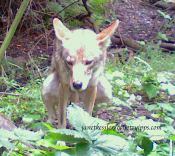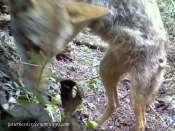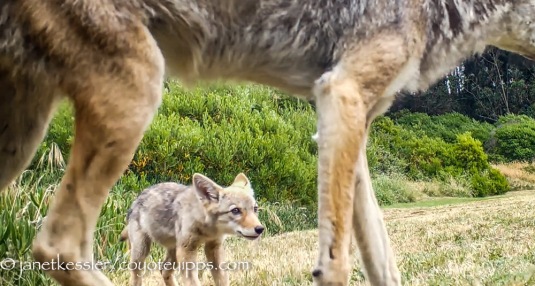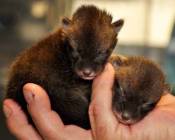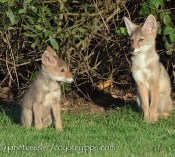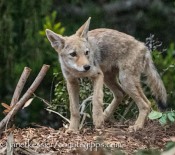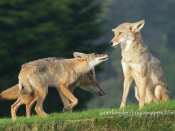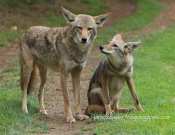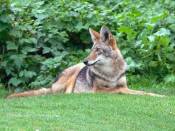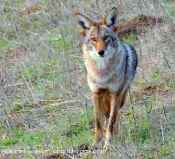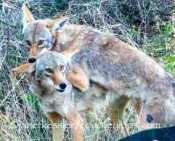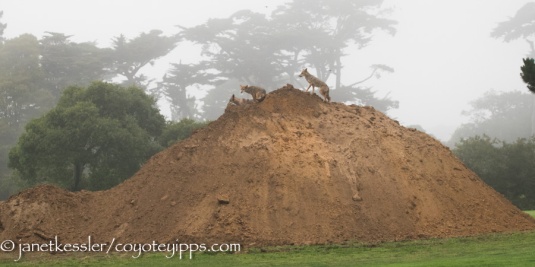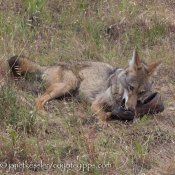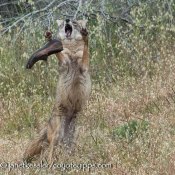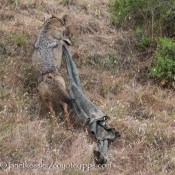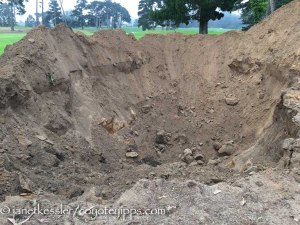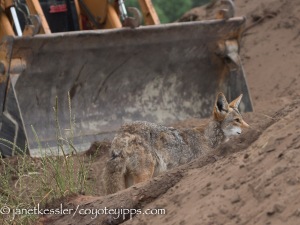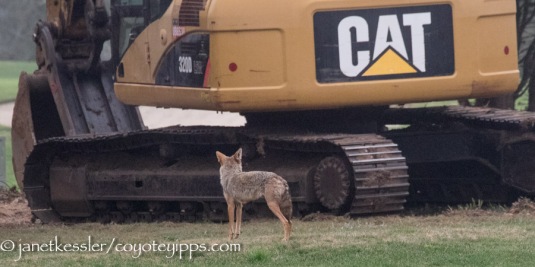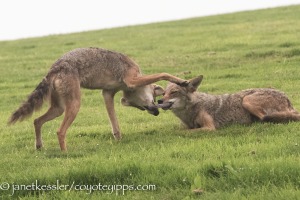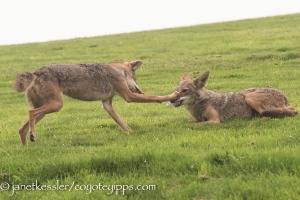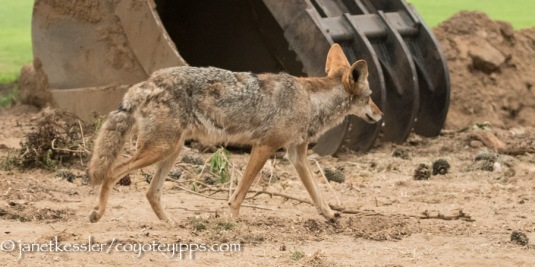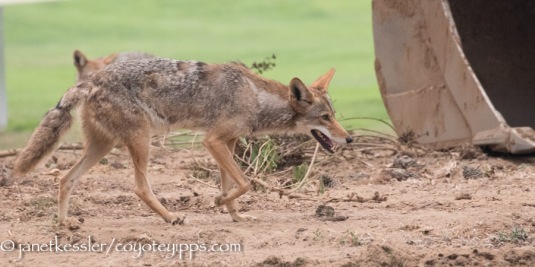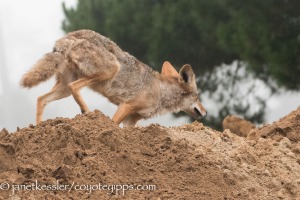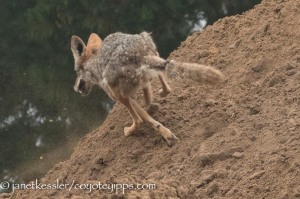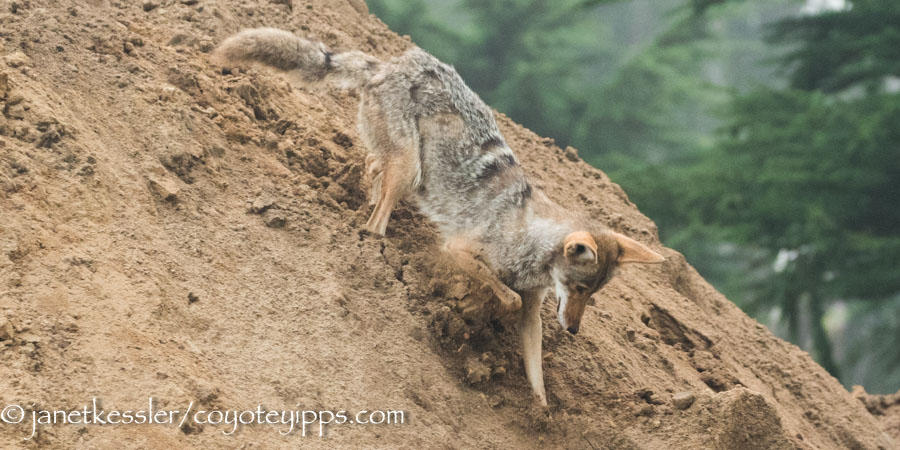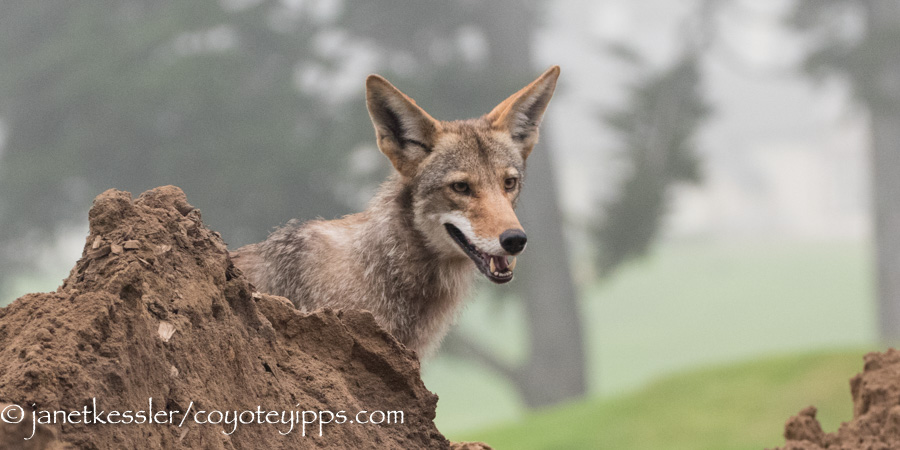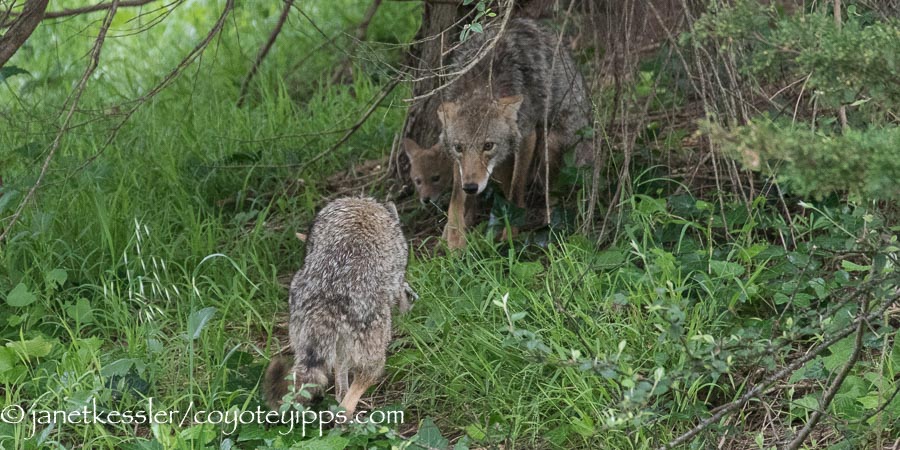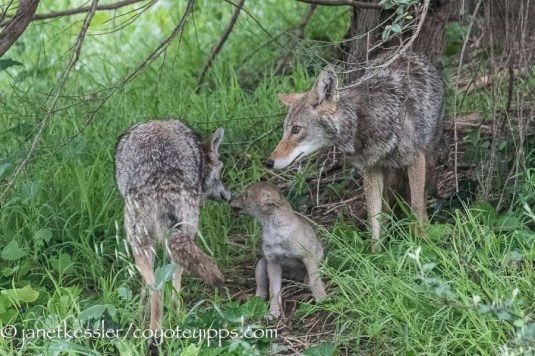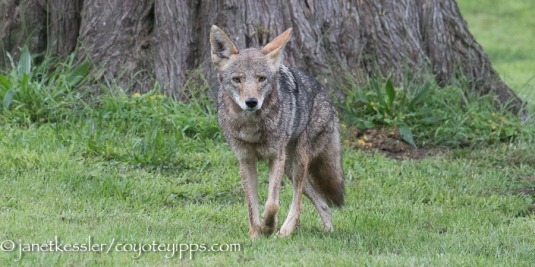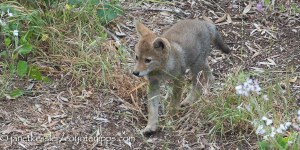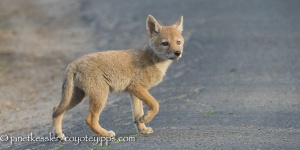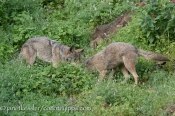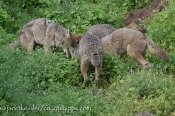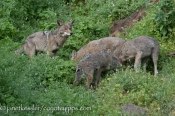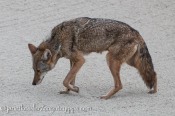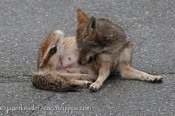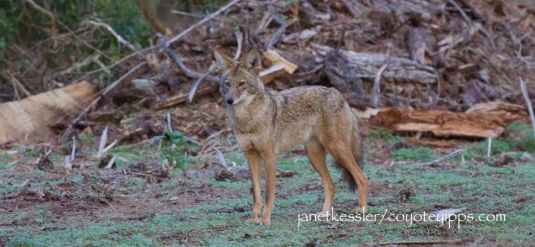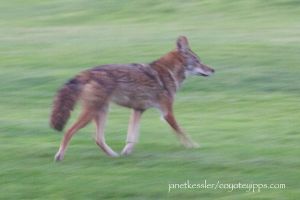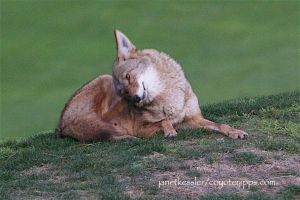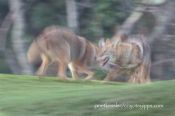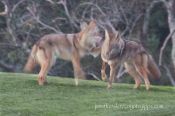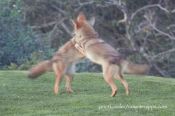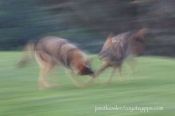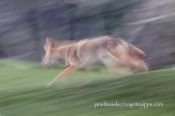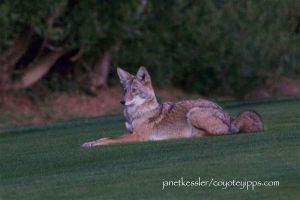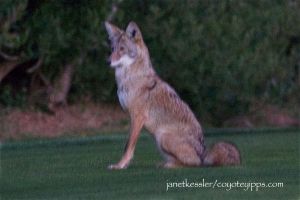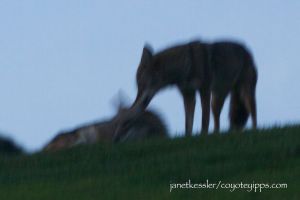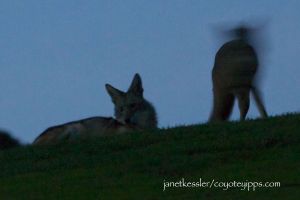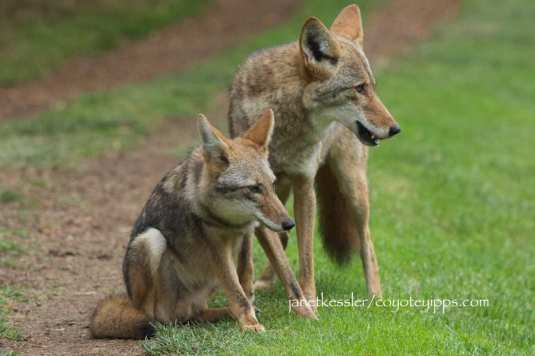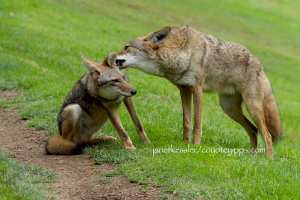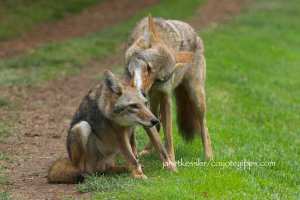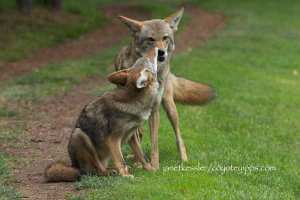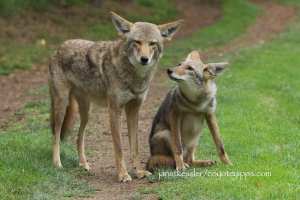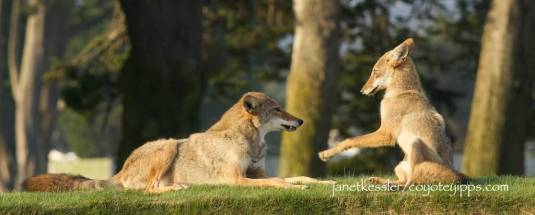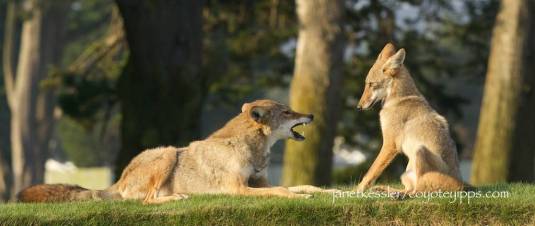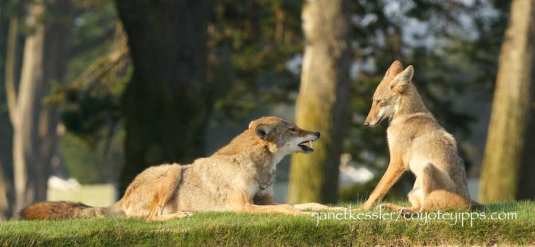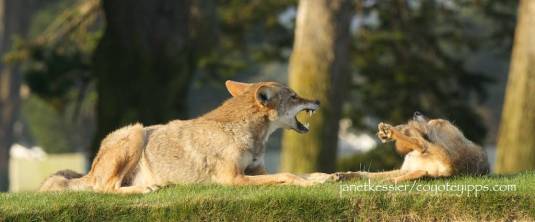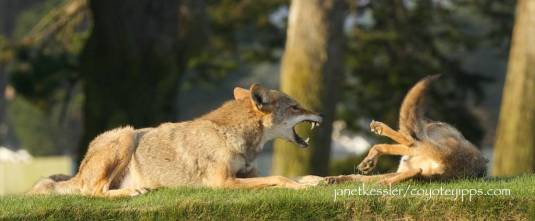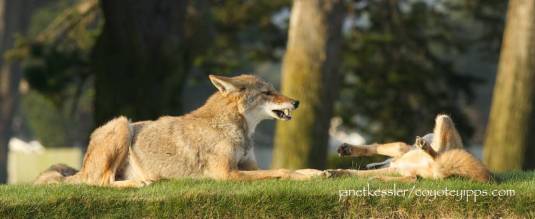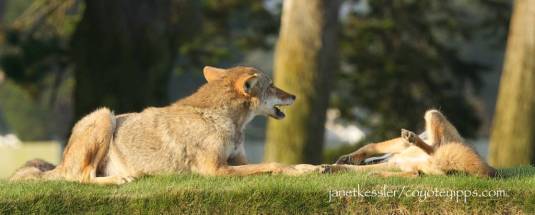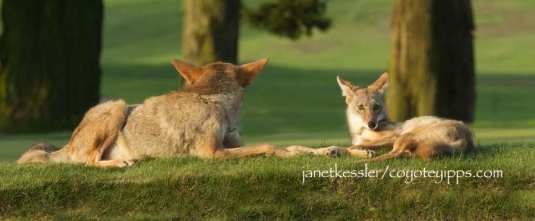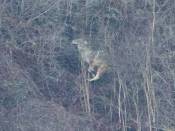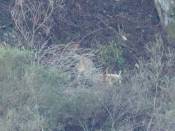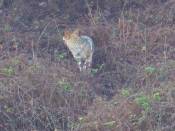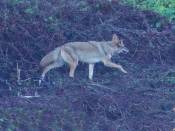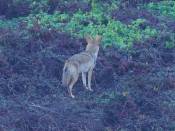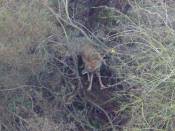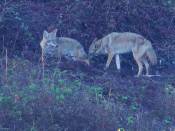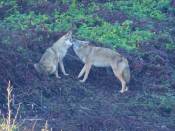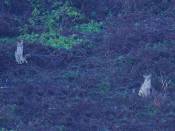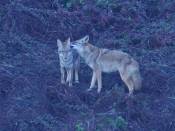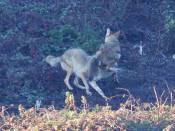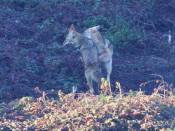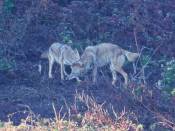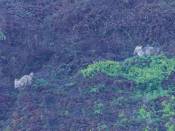The Rendezvous is a recurring nightly coming-together of coyote family members. It usually happens at about dusk, right before taking off together or separately on their treks to mark their territories and hunt and otherwise be together. It’s a highly social event with interactions occurring between each individual: there are greetings following rank protocols, and there’s usually play and teasing between the different individuals.
These rendezvous are always interesting to me — great for learning about individual and family dynamics. Each rendezvous is different, with different seasons revealing different priorities and seasonal stages. Their individual personalities pop open when they’re together, as well as their stages of development — things you don’t always see when you see individuals alone, or see them only very occasionally, or without knowing who each individual is, including teasing, affection, disciplinary level, etc. Because they aren’t just hurrying away or hunting, certain things become more obvious: statuses, injuries, courting behavior, changes in relationships such as burgeoning rivalry between brothers, who is missing (because of death or dispersal). If dogs interfere, then their reaction comes into view.
Rendezvous usually occur at dusk, so the waning light makes observing, and even more so, “capturing” the observation, more difficult. Towards the end of this session, I was literally guessing where the coyotes were as my camera captured the blackness, which I was then able to edit into readable, even if extremely substandard images. So here are a few sequences that had meaning for me. I’m sure there was a lot I missed in-between these, but these will give you an idea of how full those get-togethers are. I believe you all can see more through still images, rather than a video where you might actually miss what is going on. But also, videos take up a lot of space and, for me, are harder to edit down. Nevertheless, I have included two short video sequences here and inserted them where they fit in chronologically.
1 & 2 pup cowers as dad approaches; 3 & 4 pup reaches up to dad with snout and paw
This rendezvous, from when the first coyotes appeared, until they departed the area, lasted exactly half an hour. As I said, by the time it ended, I could not see anything clearly. It began with a youngster appearing and looking around. He soon cowered submissively asa snarly Dad approached him. After cowering acceptably to Dad’s satisfaction, the youngster — 9 months old at this point — still keeping himself low to the ground, stretched up his snout and then his paw in a submissively accepting gesture to Dad. But the status routine apparently wasn’t settled yet, because the youngster, see second group of photos below, attempted following Dad, and was repelled by Dad’s snarly glare — communication is very clear to every coyote. The youngster again cowered and went the other way. Within a few minutes after this, Dad was happy with the respect shown him, and allowed the youngster to relax close by (last of the 8 first photos).
5, 6 & 7 pup follows dad but is repulsed by dad’s expression; 8 finally the two relax proximately to each other [each galleries can be clicked for a larger view, and then scrolled through]
Most observers aren’t able to break apart these different interactions as they observe. More is going on here than mere greetings, statuses and interactions. It’s pre-mating season, so mating time is going to commence soon, if it hasn’t already.
Then, Mom arrives. Mom arrives and vocalizes, and the rest of the family joins in as she hurries over to them (video below)
Above video: Mom arrives and vocalizes, and the two other family members join in.
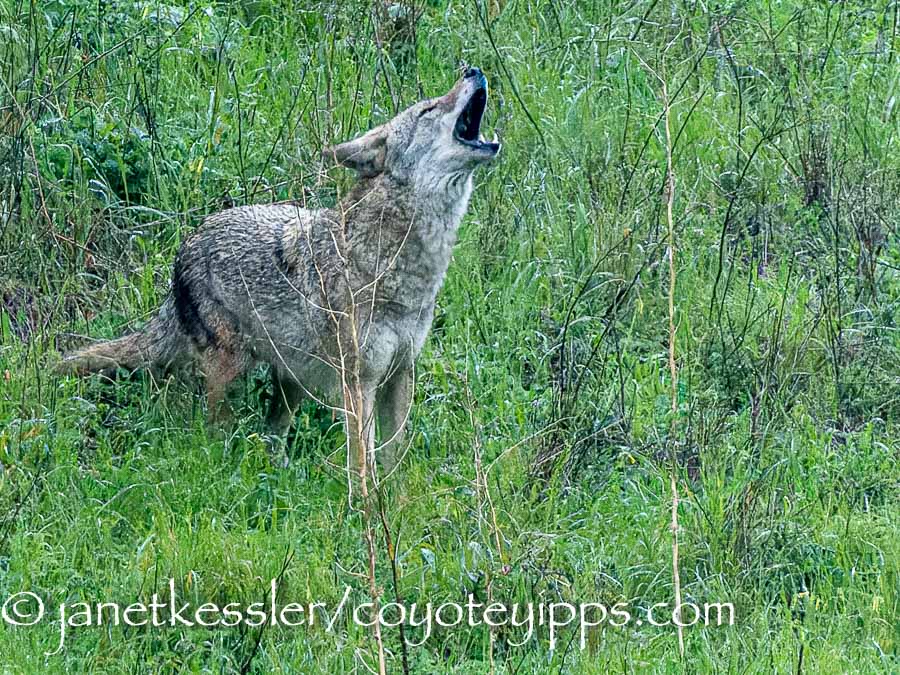
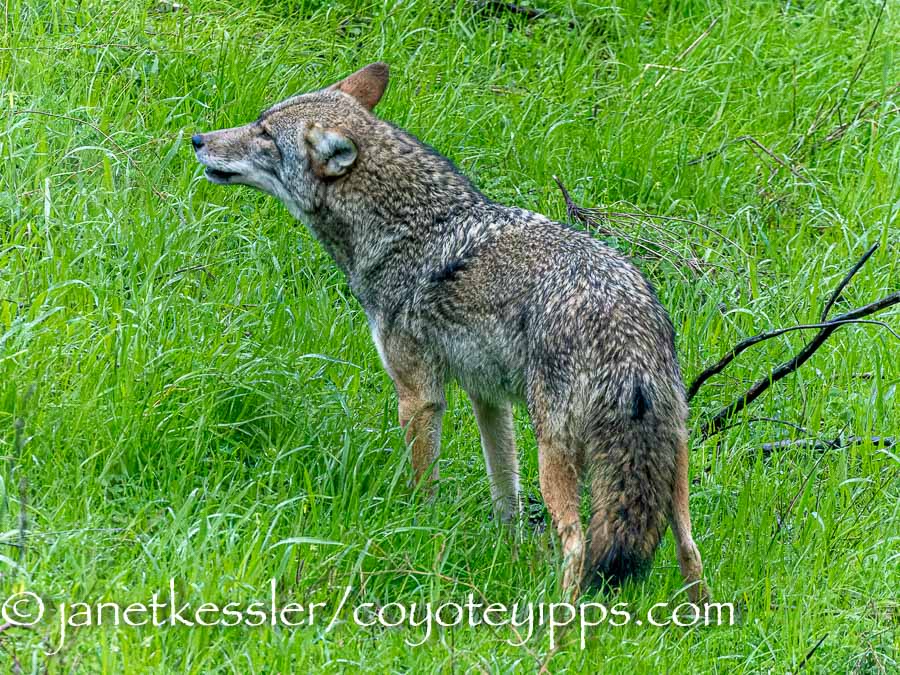

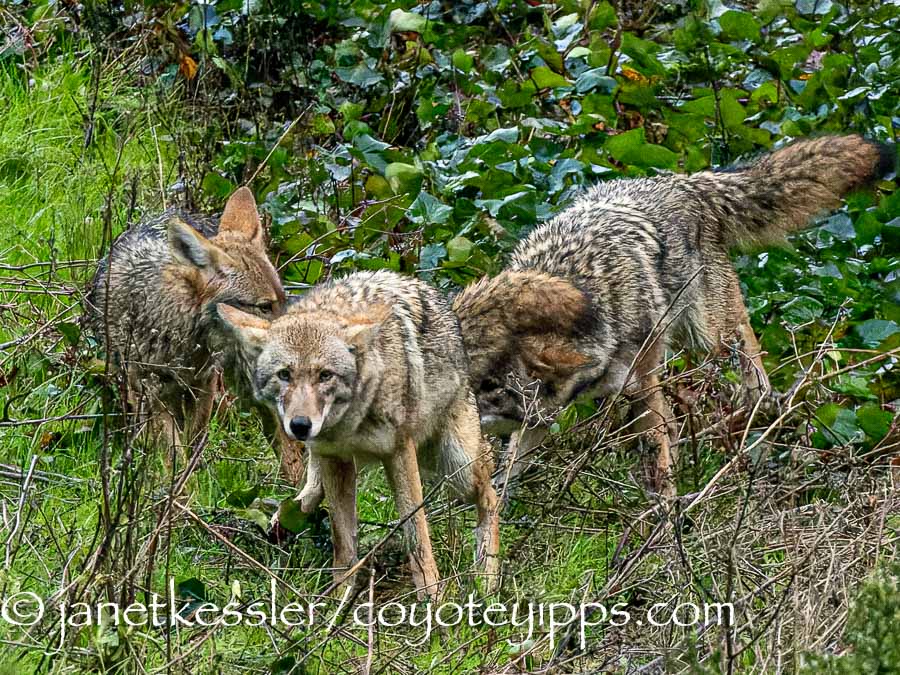
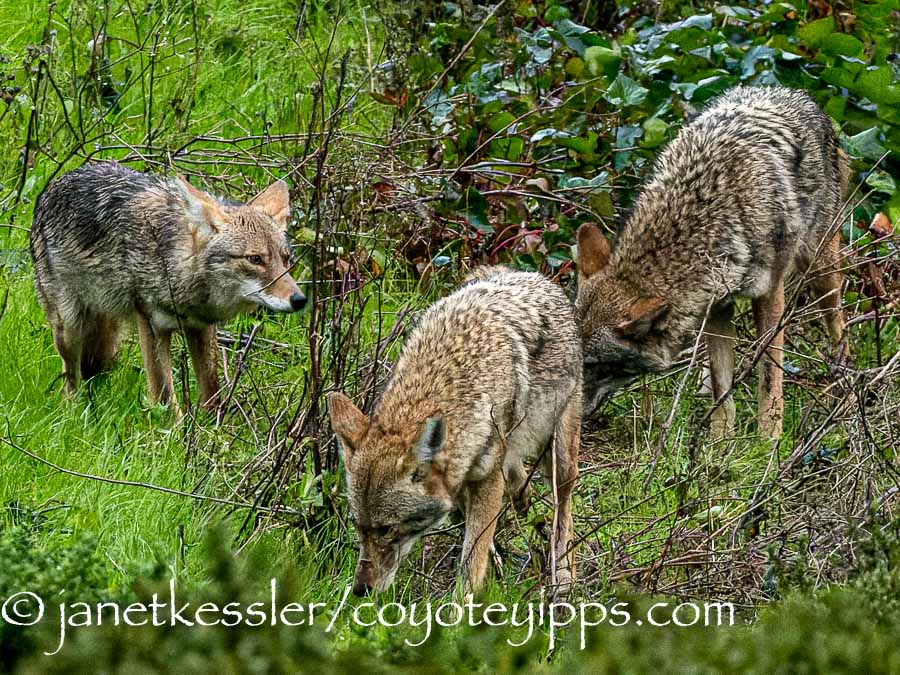
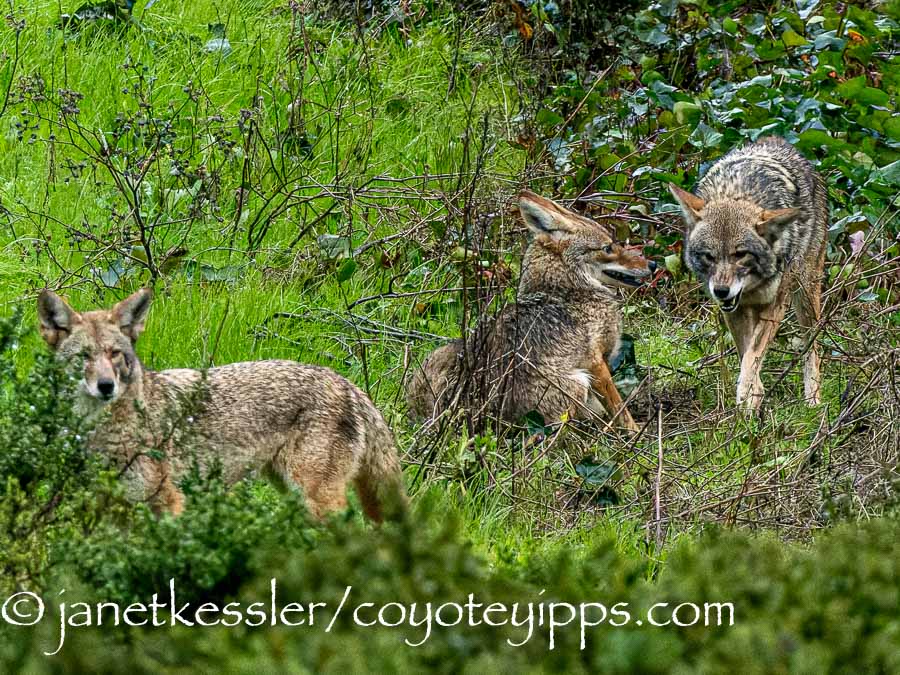
Above, 1) Mom arrives and begins howling. #2 Dad responds as does the one youngster there. #3 Mom hurries over to them and sniffs around. #4 Mom urinates. #5 Her urine is full of hormones at this time of year and Dad, you can see, is keenly interested in their levels. #6 Dad lets youngster know he’s in the way with a snarl: pup pulls his mouth back in a grimace and sits back to allow Dad plenty of room
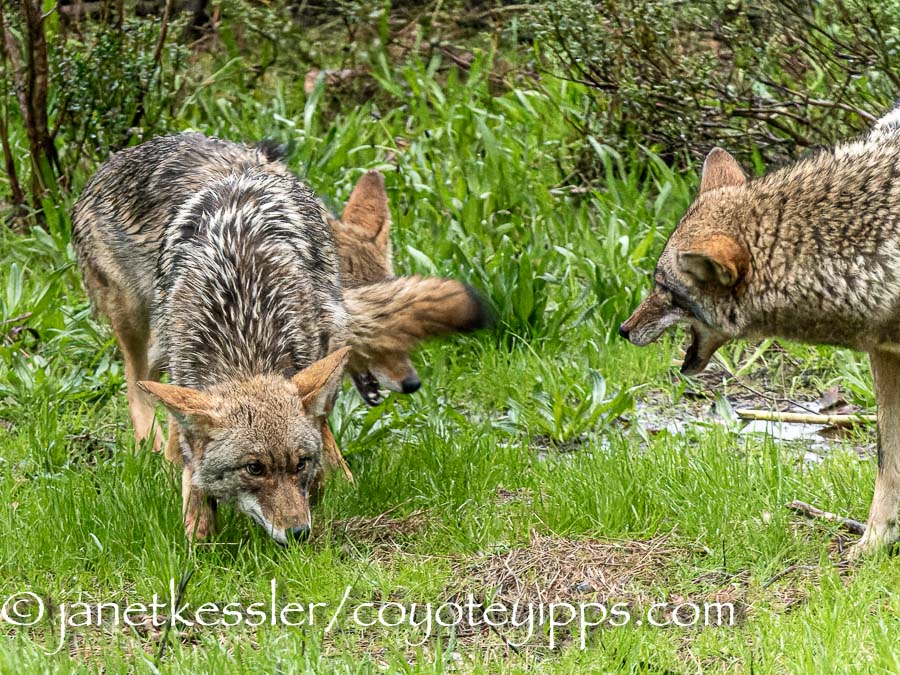
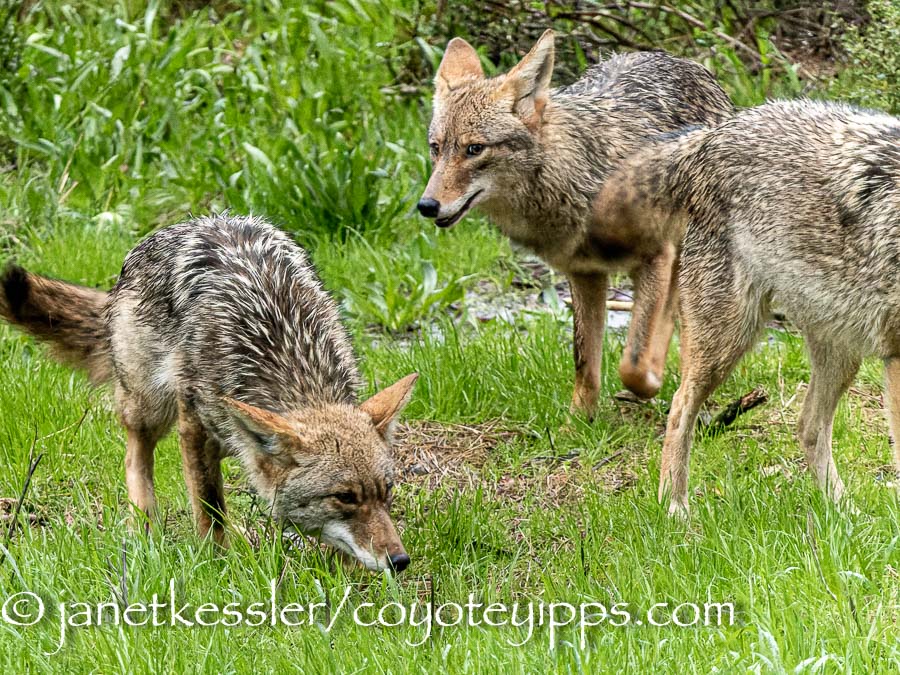
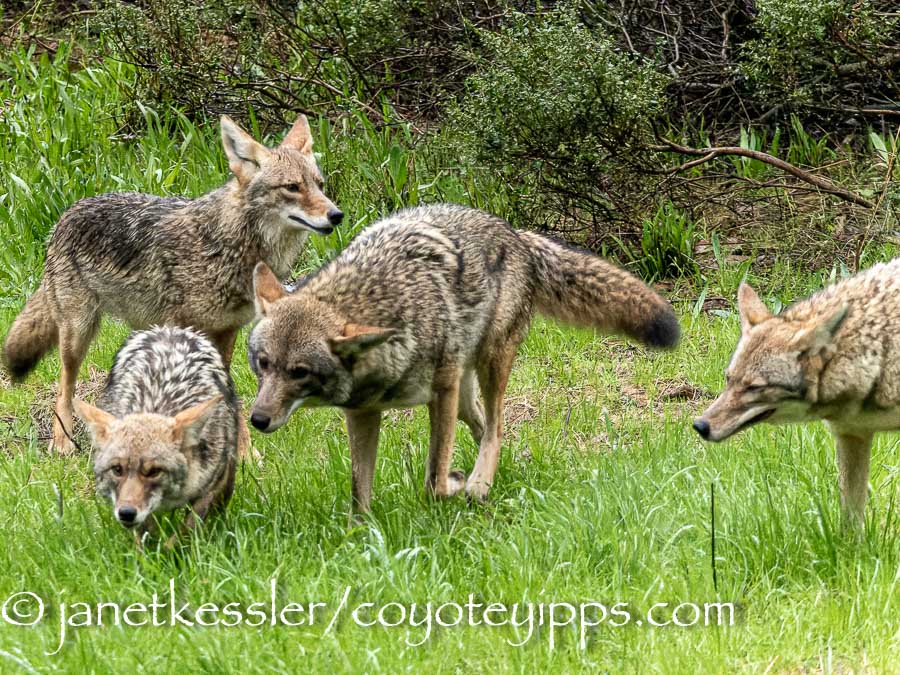
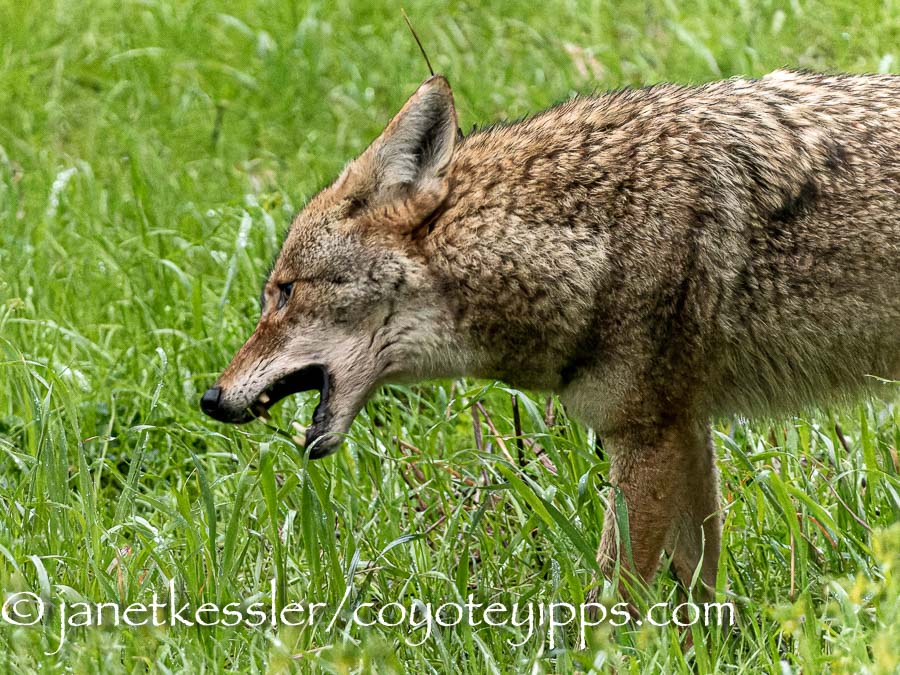
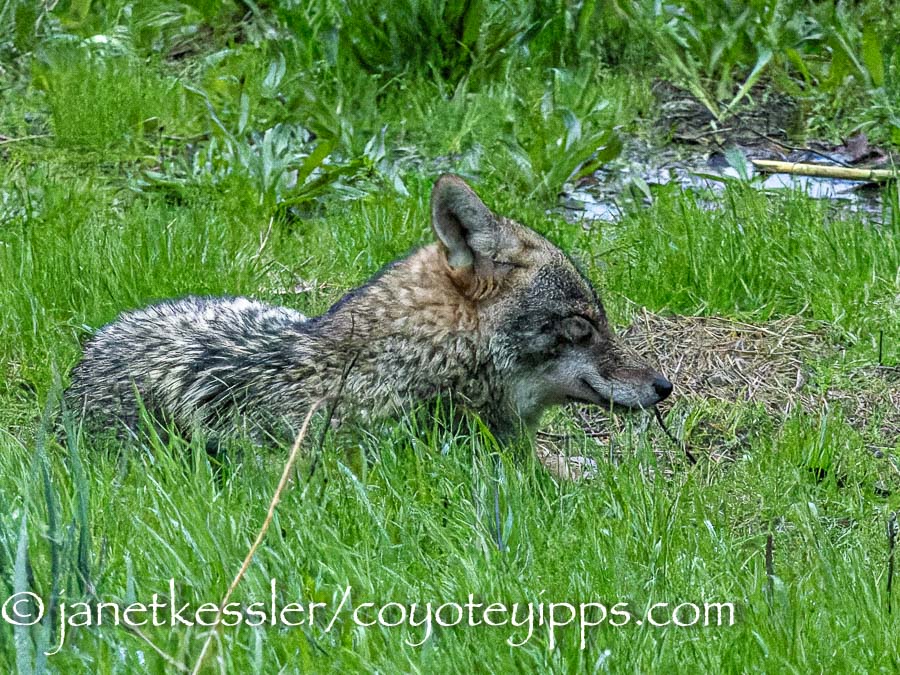
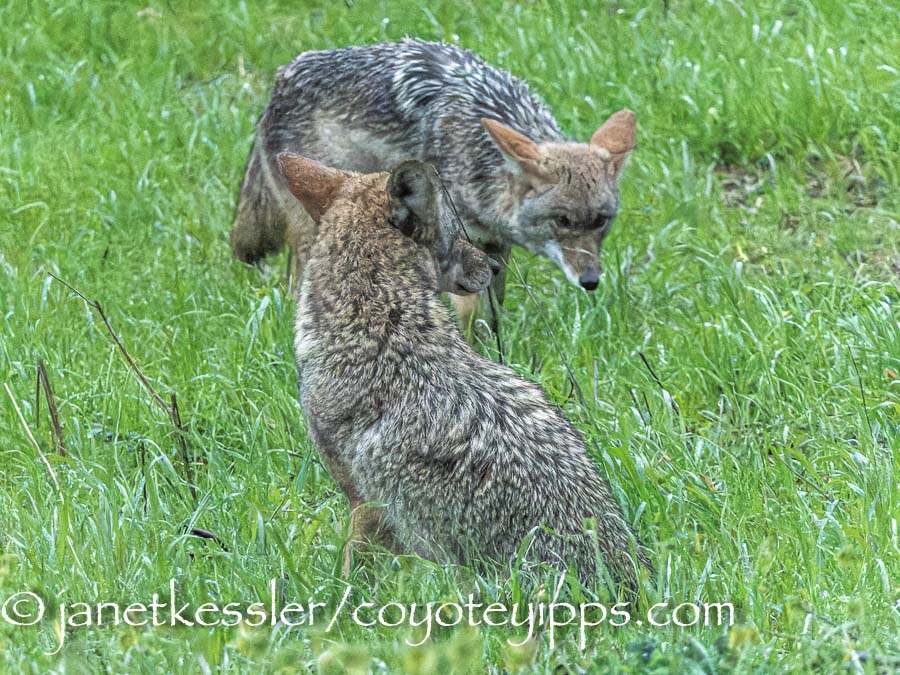
#1) Second pup arrived on the scene and Dad gave him the same treatment his brother got. #2) Brother takes in that family interaction — they all can and do read minute nuances in each other’s interactions and know the meaning of it all. #3) Dad is heading the youngsters away from Mom who you see to the right. I don’t know what her intent here is, but you’ll see her later reaching out to say hello to this male pup of hers. #4 Mom heads away from them and eats grass: she’s nervous, while #5) Dad dozes nearby. At this point, #6 it’s the youngster who heads towards Mom, possibly indicating that he’s ready to get going.
Two other family youngsters were not present. One yearling may have dispersed, but the other youngster is probably still around. Not all family members are always present for these rendezvous. After the last photo above, all family members got up and interacted as you see here in the video below.
Video shows a few moments of the interactions: Dad wove himself between his mate and the youngsters — he didn’t want to give them the opportunity to become interested in her other than as a mom. Mating season is about to begin, so he has to keep this kind of order.
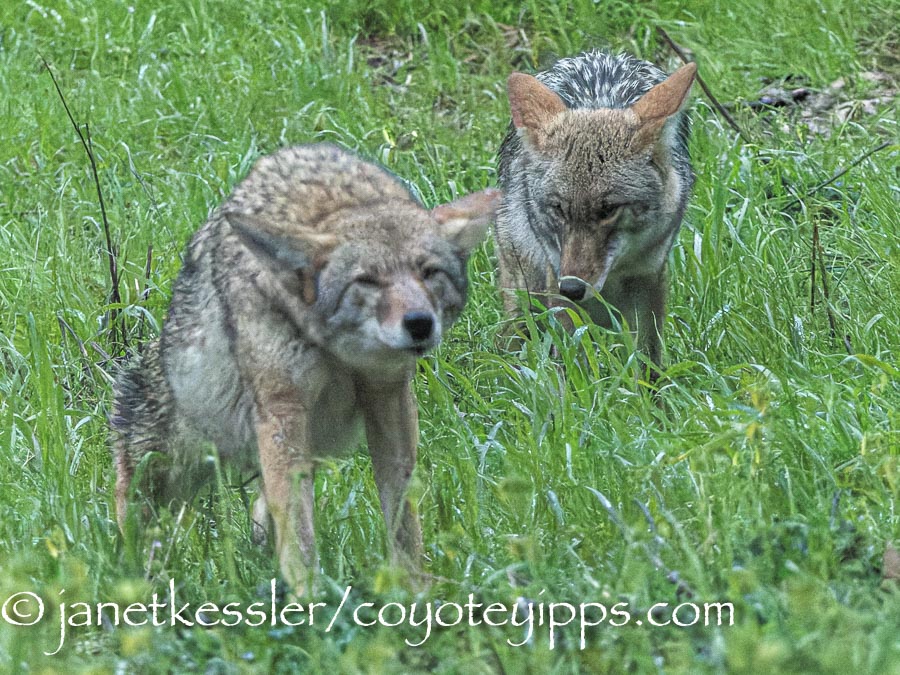
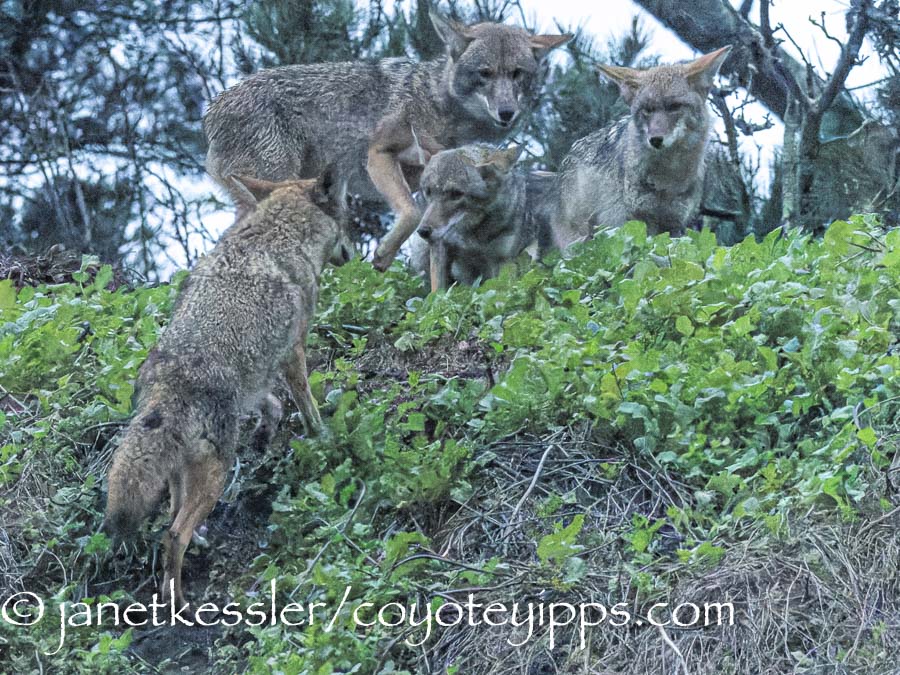
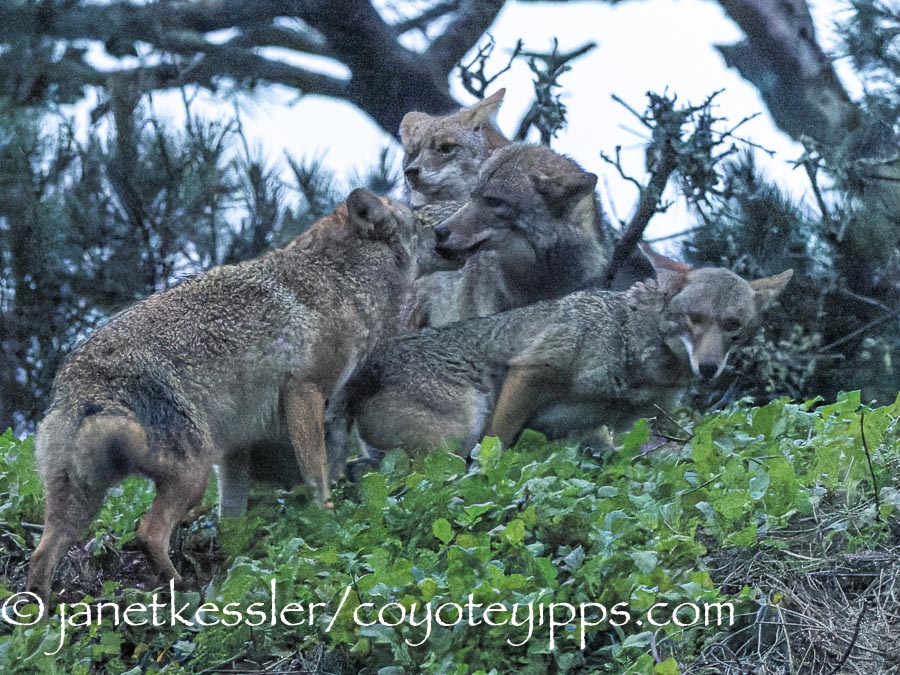
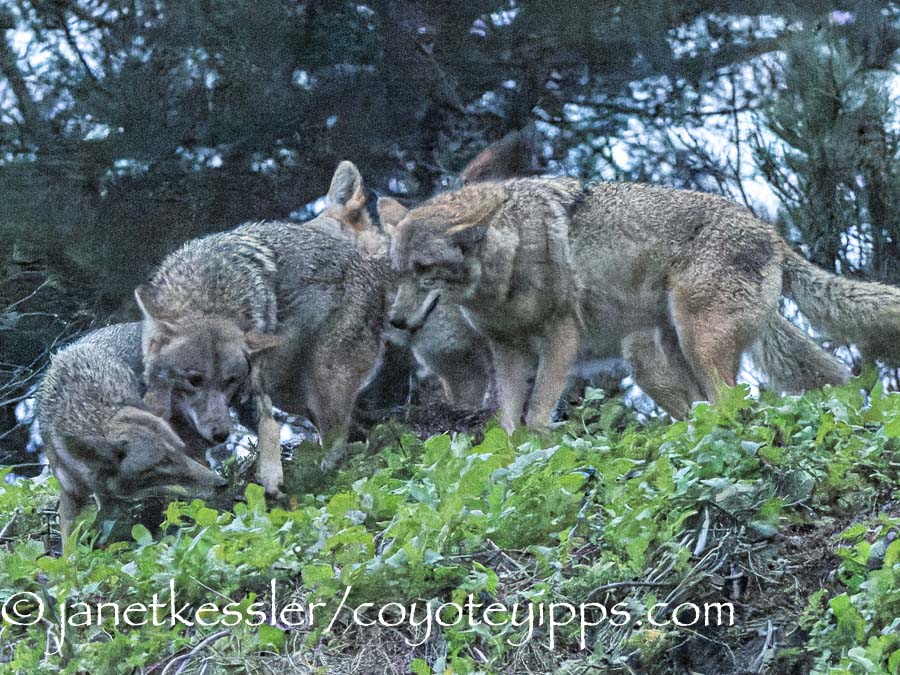
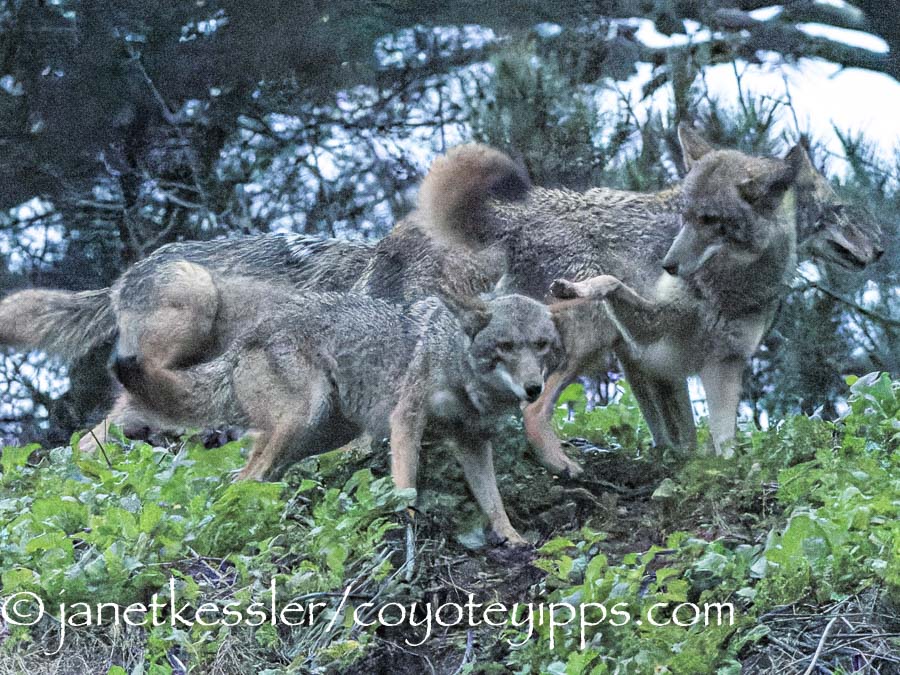
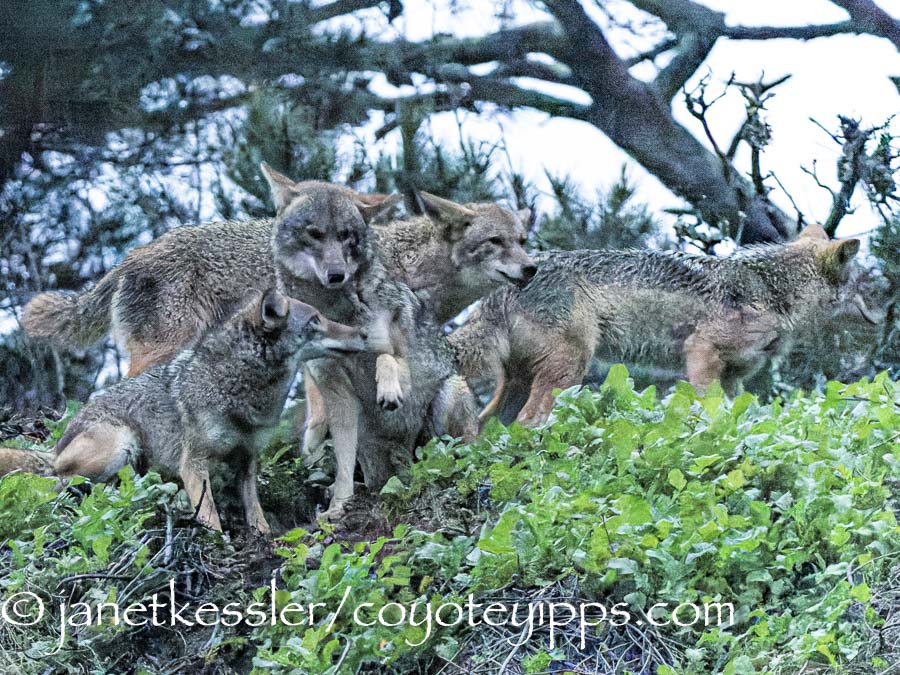

#1) Mom stretches and then leads the family pack out, but then she waits for them all to catch up and she #2) brings up the rear. #3) Note that her interest is first and foremost Dad: they touch noses as she reaches them, with the youngsters knowing to wait their turn. #4) Mom seems to be intent on saying hello to the youngster she was unable to greet earlier (because of Dad’s interference). The last two photos #5) and #6) show them four of them just before they disappeared, with Dad reaching out to touch one of the youngsters at the end there. I’ve included a small photo here showing how dark it actually was out there for these last images. Photo editing is amazing these days: that is the same unedited photo as #6 above.

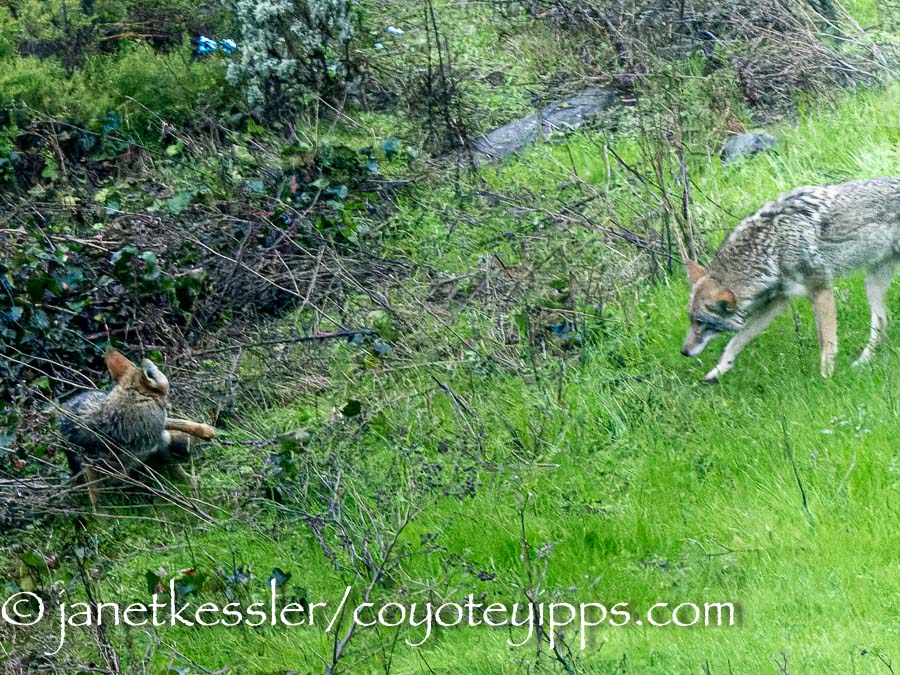
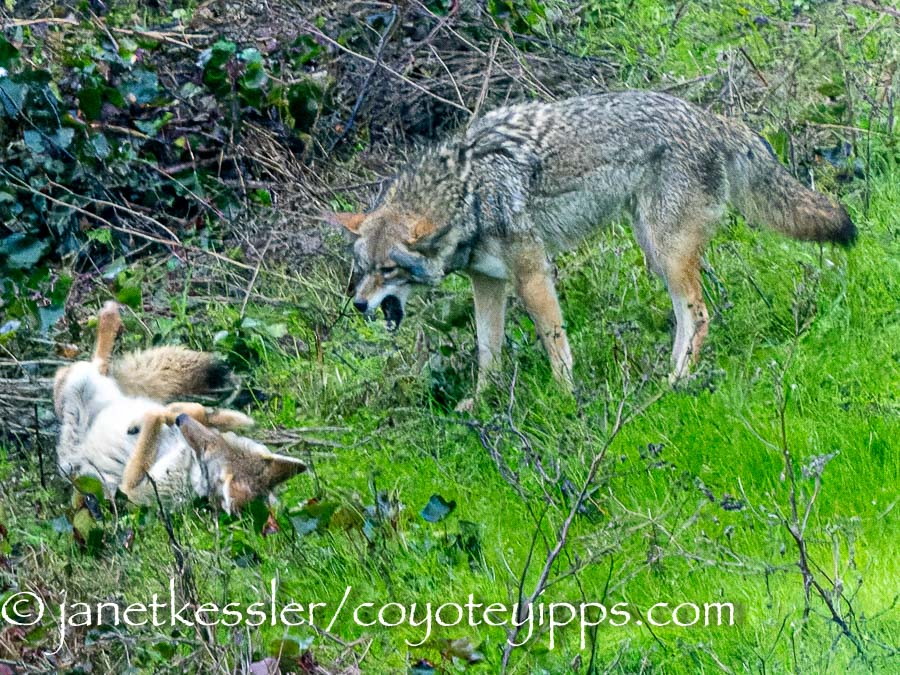
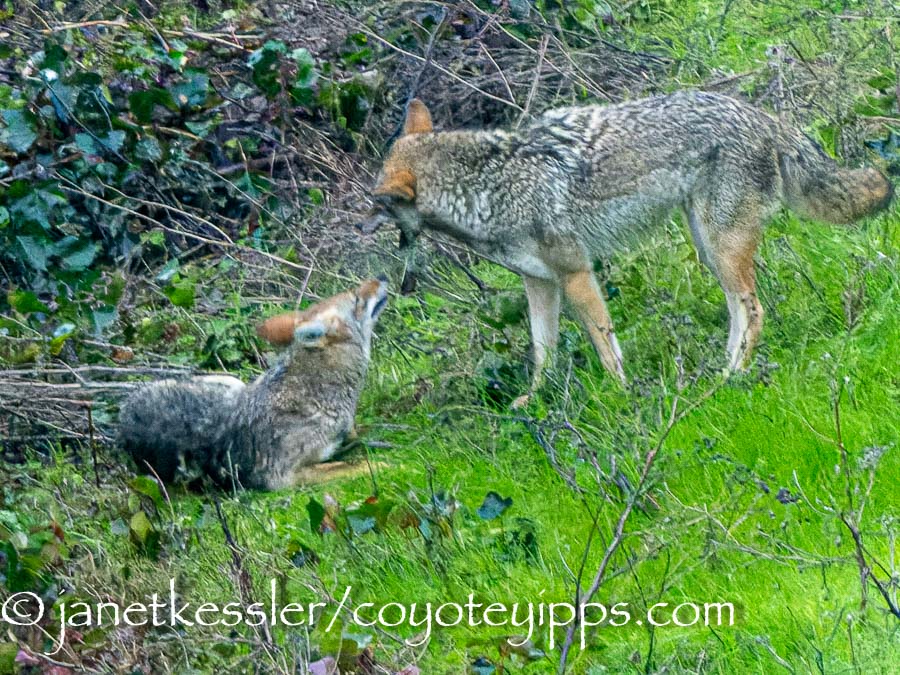
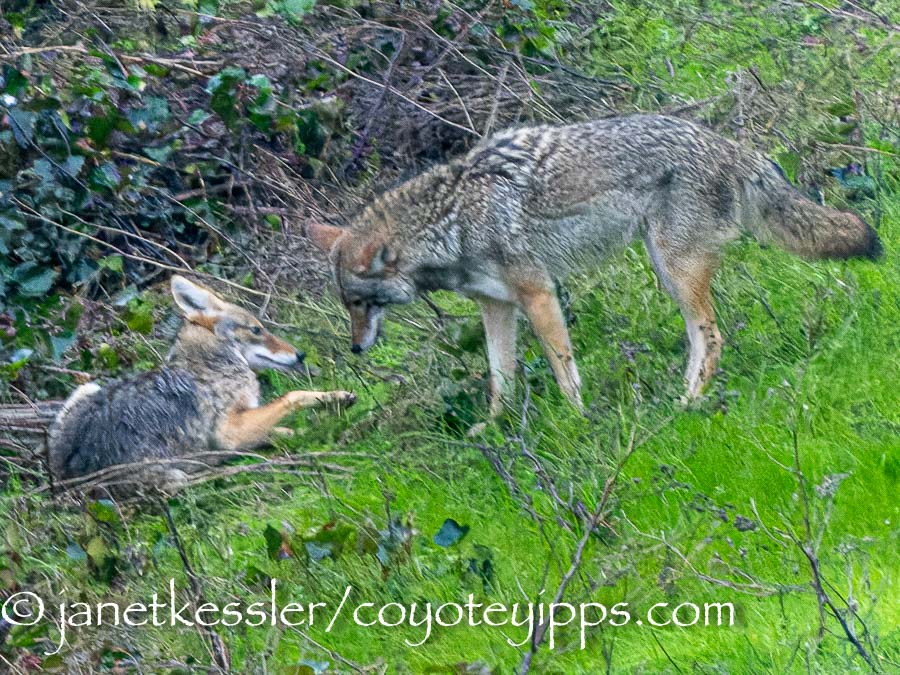
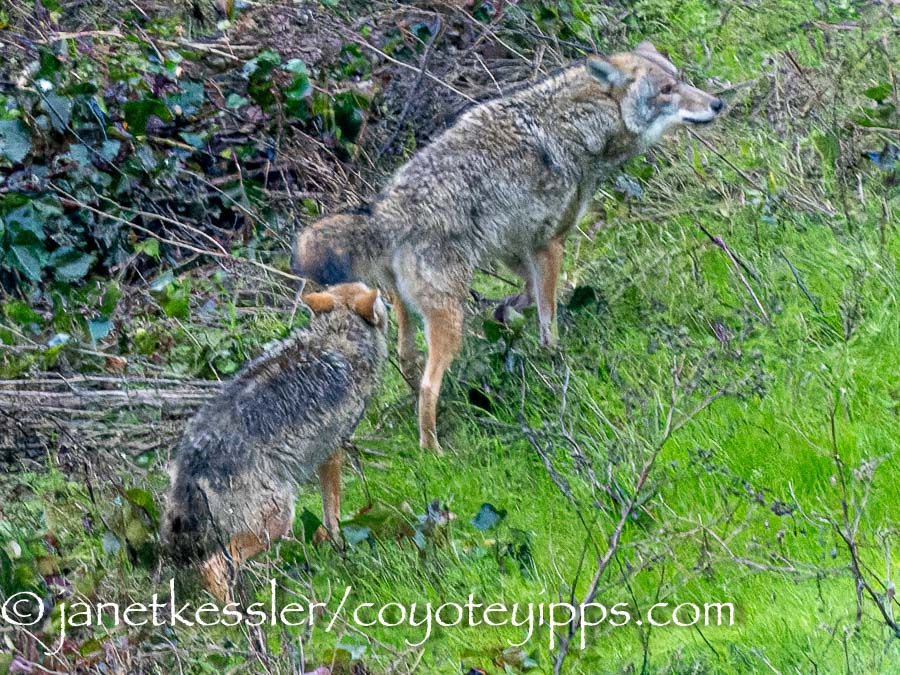
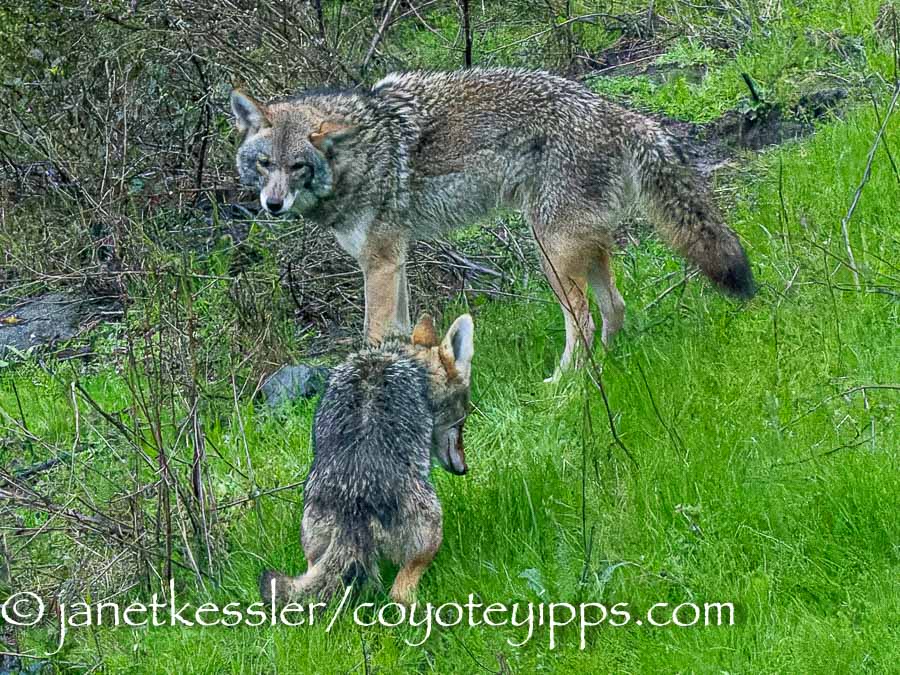
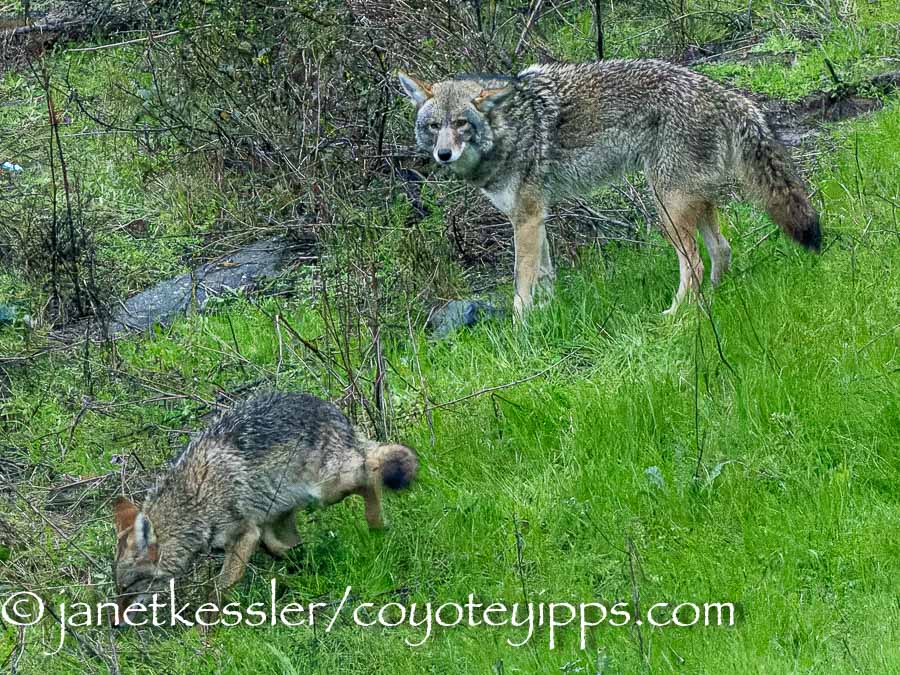

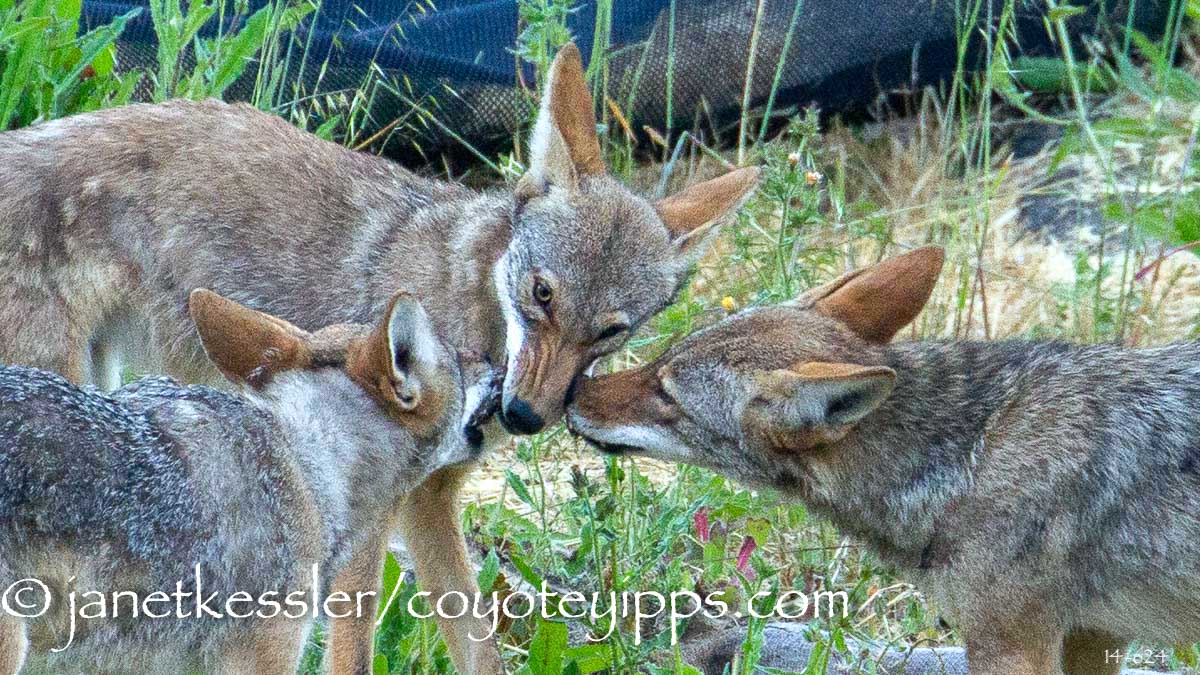
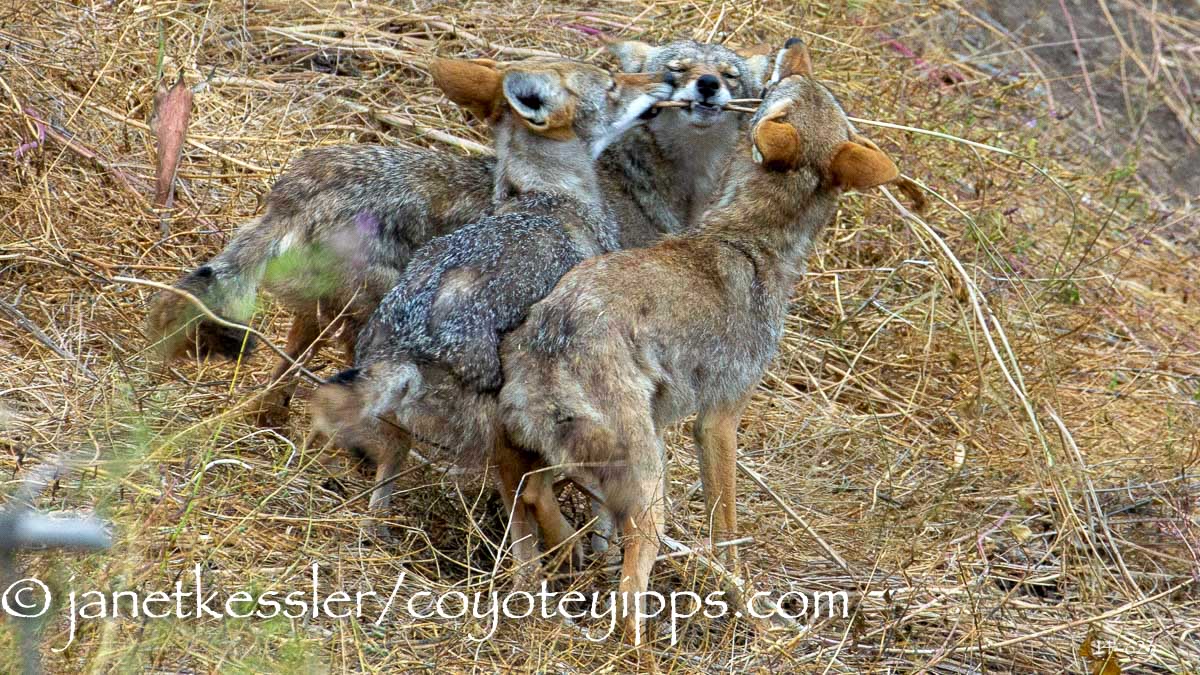
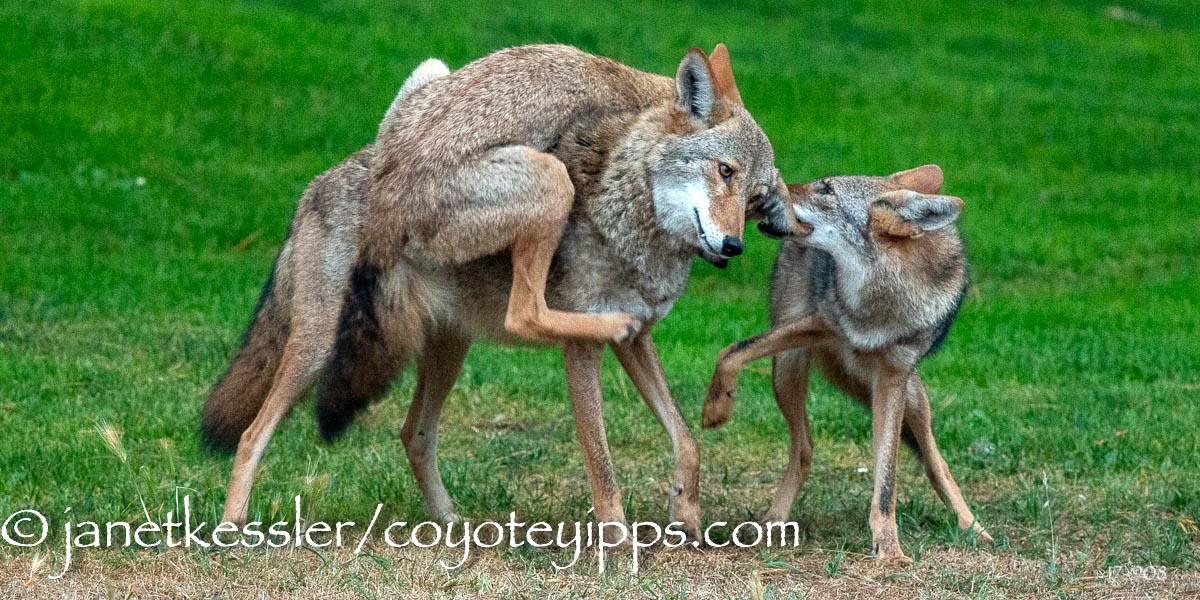
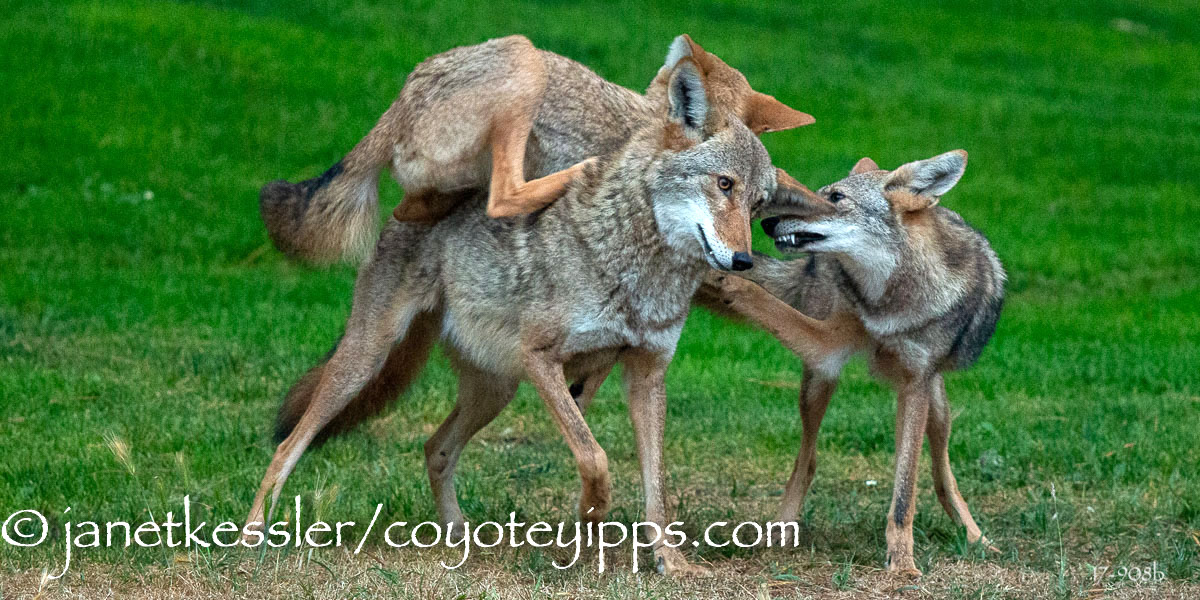
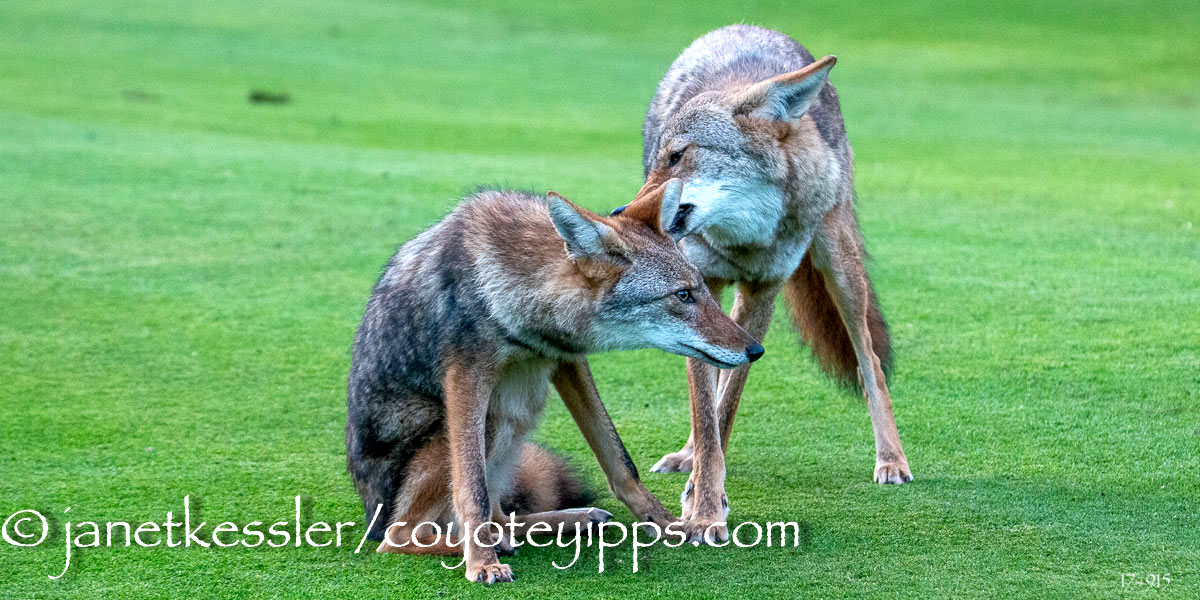
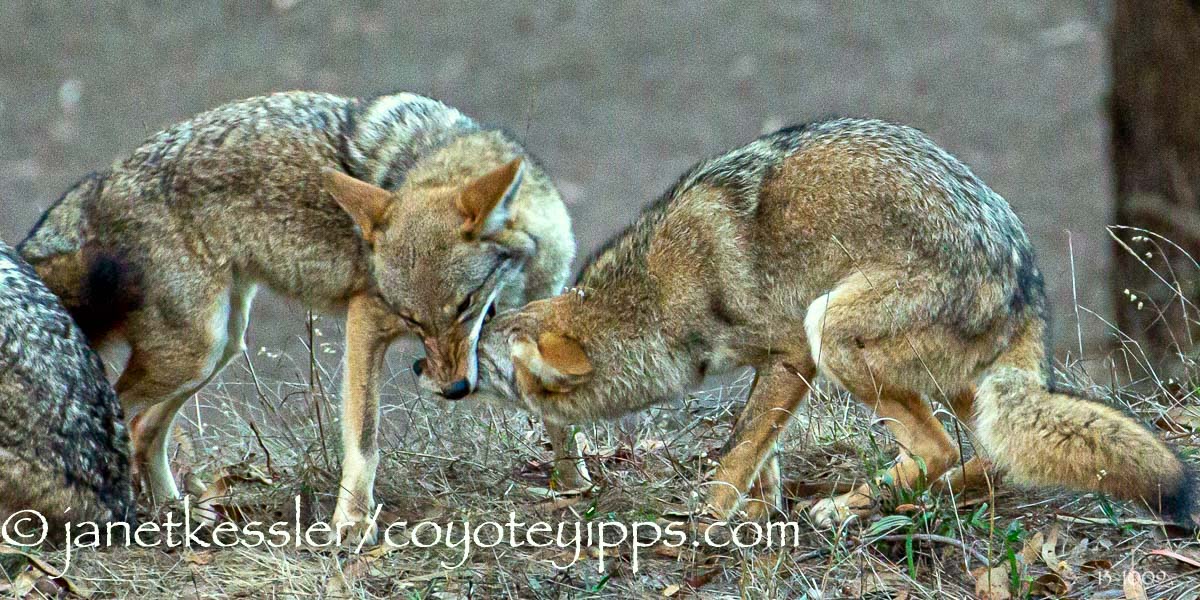
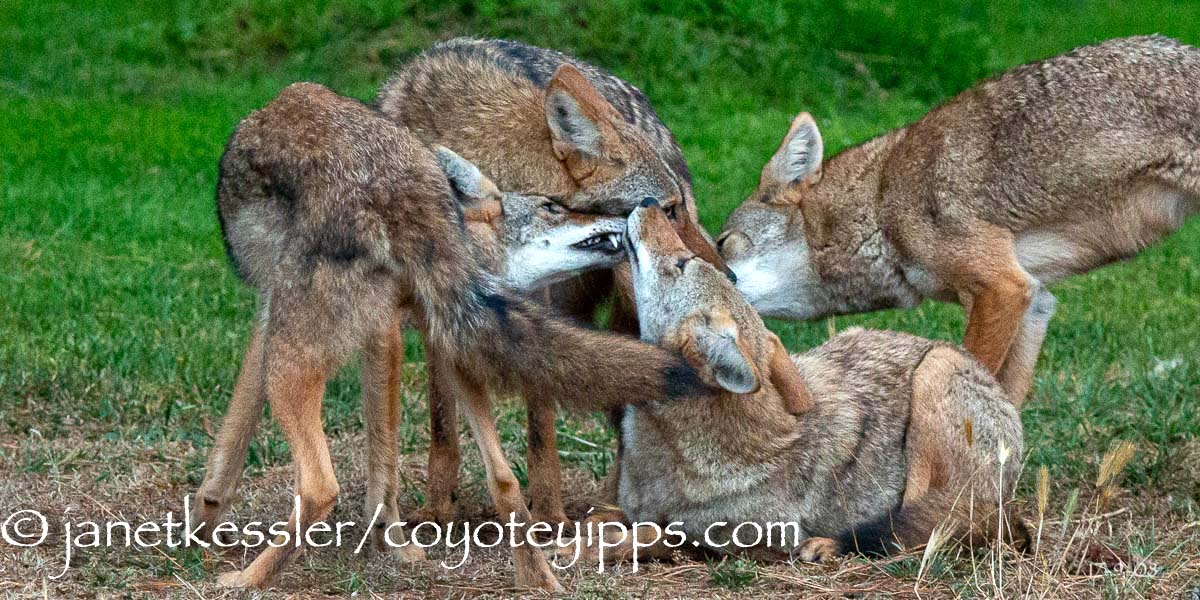
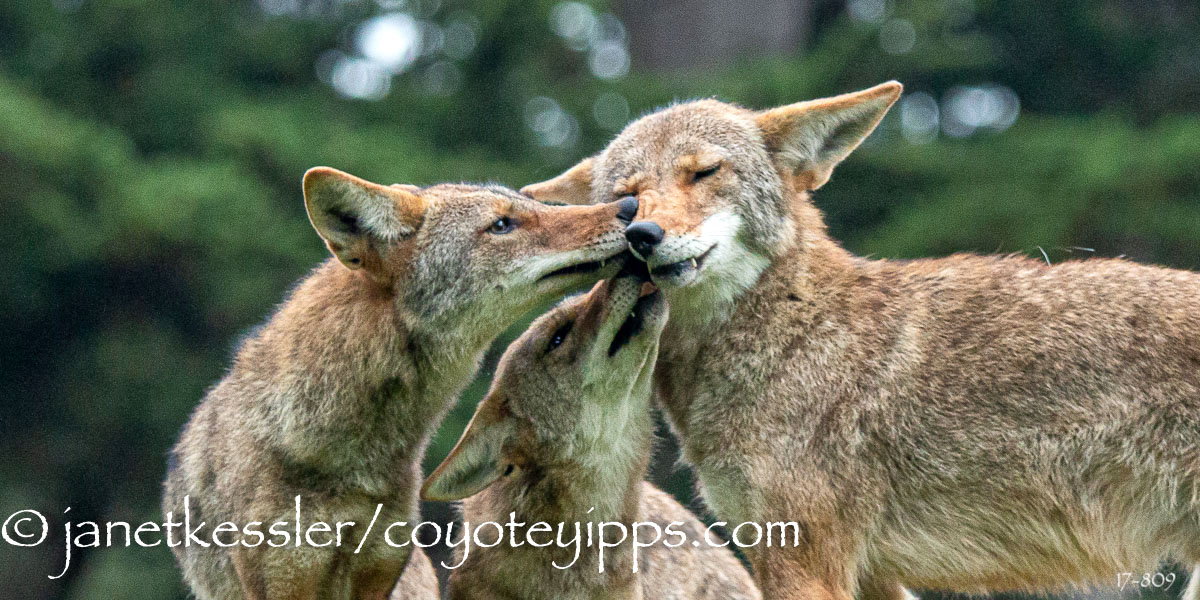
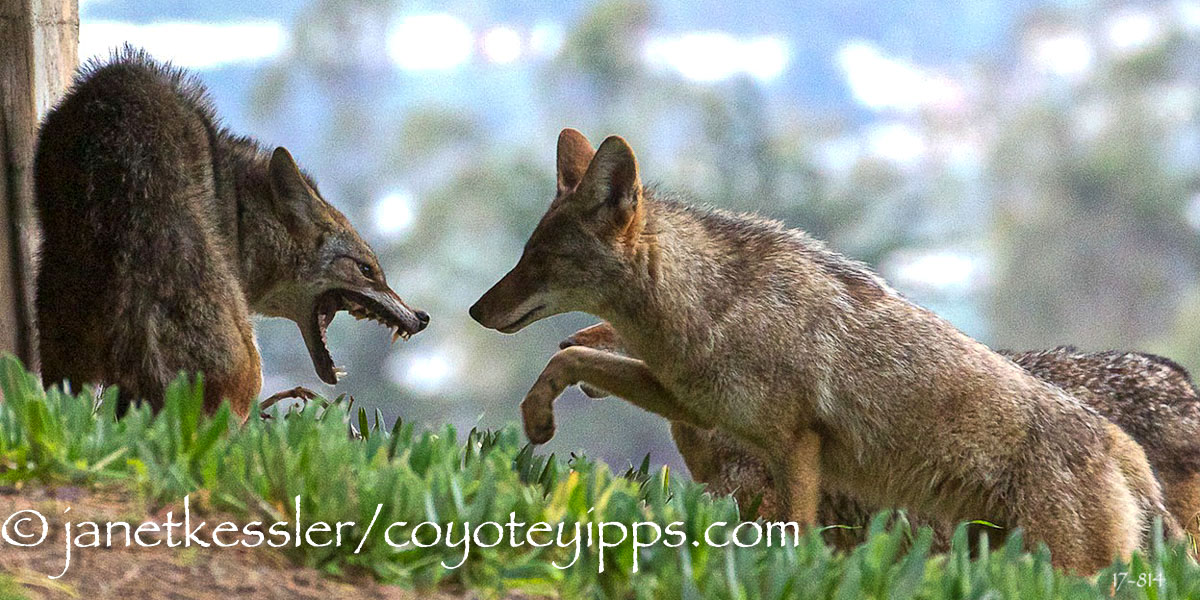

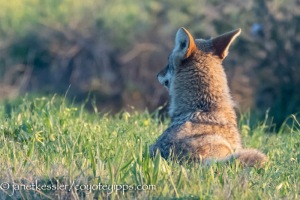
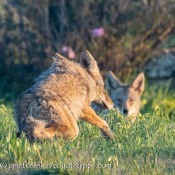
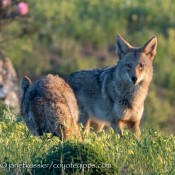
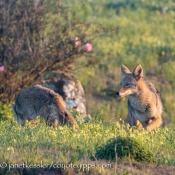
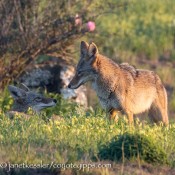
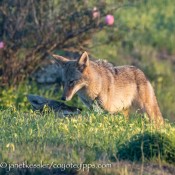
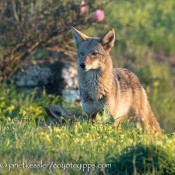

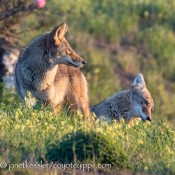
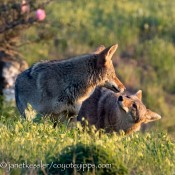
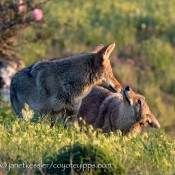
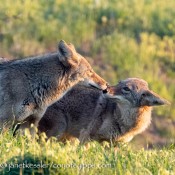
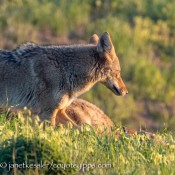
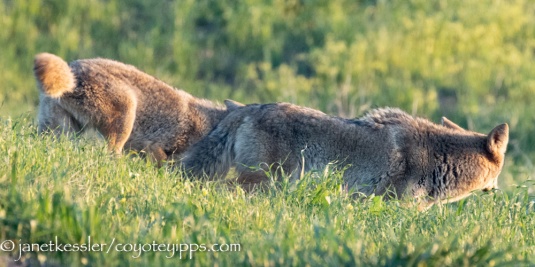
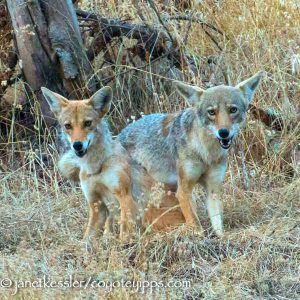 Introduction:
Introduction: